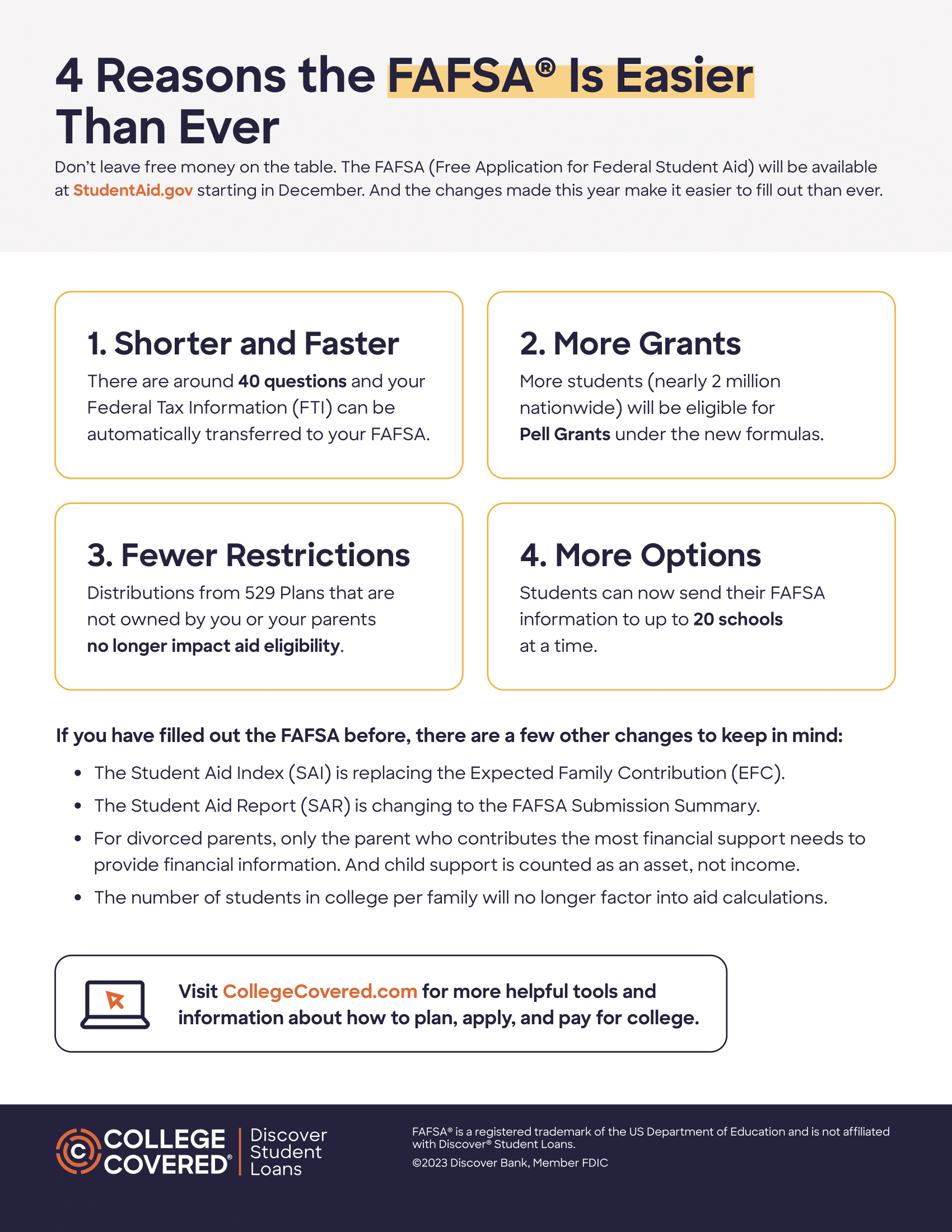Upcoming changes to the FAFSA will affect the way your family fills it out, as well as the way funds will be distributed.
In 2020, Congress passed the FAFSA Simplification Act, an overhaul of how federal student aid is calculated and distributed. The changes will be implemented for the 2024-25 school year. They will affect the way students and families complete the FAFSA (Free Application for Federal Student Aid) and receive financial aid.
The FAFSA is notoriously complex and many families don’t bother to fill it out. In fact, one study by the National College Attainment Network found that only 59.3% of seniors filed FAFSA applications, leaving billions of dollars in federal and state aid unclaimed. “We have some clients who are well-off who say, ‘you know, I’m not going to even bother,’” notes Ron Caruthers, a wealth planner based in Southern California and author of What Your College Guidance Counselor Didn’t Tell You. “But we always tell them, ‘no, fill it out because circumstances change. Think of it as an insurance policy. If you lose your job between now and enrollment, you can go to the financial aid office and show how your situation has changed. But you need to fill out the form.’” Plus, Caruthers adds, many schools use the FAFSA to determine merit aid.
The new, simplified form may make the FAFSA less daunting, which will hopefully mean more families will complete it. While there are many changes to the application, here are five important ones to be aware of.
1. A Shorter Application
The current FAFSA application contains 108 questions. The new, simplified form is expected to have less than 40 questions. Instead of inputting data yourself, data will be pulled directly from the IRS, and this information will be used to calculate the Student Aid Index (SAI)—which is replacing the Expected Family Contribution (EFC)—as well as Pell Grant eligibility. The updated FAFSA reduces the number of questions that lower-income students and families have to answer, which helps eliminate barriers to completing the application.
2. Expected Family Contribution (EFC) will be replaced by the Student Aid Index (SAI)
This shift is more than a new name—it will change how much student aid many families are eligible to receive. Currently, federal aid is calculated using a figure called the Expected Family Contribution (EFC). The new FAFSA will call this figure the Student Aid Index (SAI) and there are some tweaks to the formula that may change how families receive aid. For example, one thing the EFC took into account that the SAI does not is how many children within a family are enrolled in college at the same time. This could mean families with two or more students in college at the same time may receive less financial aid than they would have with the EFC. “This is a big change,” notes Caruthers, who adds that this is at the federal level only. Individual colleges and universities may consider how many students are enrolled in higher education when they dole out institutional and grant aid.
The SAI can also be a negative number, whereas the EFC couldn’t go below 0. This adjustment could result in more accurate targeting of need-based aid.
3. Predictability for Pell Grant Eligibility
Pell Grants are awarded to students who demonstrate financial need. Historically, Pell Grants were dependent on several factors, including your EFC and the cost of attendance for your school. Now, Pell Grants will use a different formula, incorporating family income, number of parents in a household, and federal poverty level to determine Pell Grant awards.
This new formula will likely increase how much Pell Grant recipients receive. Models predict that the new change will mean 76% of eligible Pell Grant recipients will receive the maximum; right now, it’s only 60%. The amount of a Pell Grant changes each year. For the 2022-23 school year, the maximum was $6,895.
4. Gifts and Contributions to the Student Are No Longer Considered Income
In the past, students had to disclose money received from friends and family, including grandparents, on the FAFSA. For example, this meant that if grandparents gave students money for tuition, either from a 529 plan or as a gift, this was considered untaxed income in terms of financial aid eligibility. The updates to the FAFSA no longer require the student to report cash gifts and 529 distributions from anyone other than their parents, which can increase aid eligibility.
“In many states, if parents own a 529, they can transfer that to the grandparents, a relative, or a friend without creating a taxable event,” notes Caruthers. “This means that it may make sense to look into your state law and see if this could be an option for your family. The student is still the beneficiary, but the money no longer needs to be reported on the FAFSA.”
5. Who Completes the FAFSA May Change for Some Families
Under the current FAFSA, students whose parents are divorced or separated report the income of the parent they spend the most time with. The new FAFSA will use the information for the parent who contributes the most financial support, regardless of whether the student lives with them. If parents contribute equally, the adjusted gross income (AGI) of the highest earner will be used.
Bottom line: These changes will have ripple effects not just in how you fill out the FAFSA, but in how much financial aid you receive. Being prepared for these changes now can help your family make a plan so the application process goes smoothly when the time comes.
FAFSA® is a registered trademark of the US Department of Education and is not affiliated with Discover® Student Loans.
Discover® Student Loans encourages you to consult a financial planner before making financial transactions. You should also consult a tax professional for tax advice.





